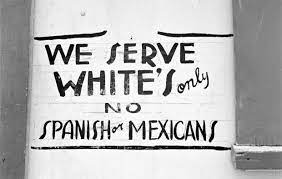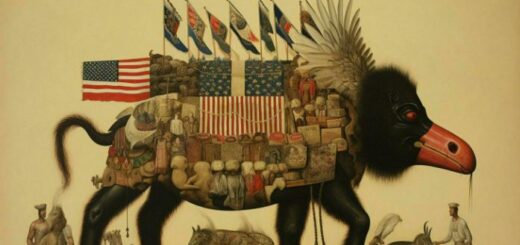Anti-Latino Discrimination History in America


Olvera Street stands as an emblematic landmark in Los Angeles—a vibrant Mexican marketplace brimming with colorful souvenirs, eateries, and remnants of the city’s oldest structures. Yet, beneath its bustling exterior lies a haunting past that many visitors overlook.
In 1931, a harrowing raid unfolded in this area. Police officers seized Mexican-Americans, including numerous U.S. citizens, forcibly ushering them into waiting vans. Immigration agents strategically blocked exits, leading to the arrest and subsequent deportation of approximately 400 individuals to Mexico. Shockingly, this expulsion disregarded their citizenship or immigration status.
This raid represents just one episode in a lengthy history of discrimination against Latino communities in the United States. Dating back to the 1840s, anti-Latino bias has manifested in illegal deportations, school segregation, and even instances of lynching—often overlooked, reminiscent of the civil rights injustices suffered by African Americans during.
Mexican American Immigration
The narrative of discrimination against Latino Americans traces its roots back to the aftermath of the Mexican-American War in 1848. The Treaty of Guadalupe Hidalgo, marking the end of the war, ceded 55 percent of Mexican territory to the United States. This acquisition brought forth a new populace of citizens. Mexicans residing in the now U.S. territory were offered citizenship, significantly expanding the country’s Mexican American population.
Throughout the latter part of the 19th century, political developments in Mexico prompted increased emigration to the United States. This trend was embraced by American businesses like the Southern Pacific Railroad, urgently seeking inexpensive labor for the construction of new railway tracks. Companies disregarded prevailing immigration laws that prohibited importing contract labor and dispatched recruiters into Mexico, persuading Mexicans to migrate.
As immigration surged, so did anti-Latino sentiment. Latinos encountered exclusion from Anglo establishments and were segregated into urban barrios situated in impoverished areas. Despite their indispensable role in the U.S. economy and their American citizenship status, various facets, including language, skin color, and country of origin, became justifications for discrimination. Anglo Americans treated them as a marginalized foreign class and perpetuated stereotypes, labeling Spanish speakers as lazy, unintelligent, and unworthy. Tragically, in some instances, this prejudice culminated in fatal consequences.
Mob violence instilled terror among Latinos
Instances of mob violence targeting Spanish-speaking individuals were distressingly frequent in the late 19th and early 20th centuries, as noted by historians William D. Carrigan and Clive Webb. Their estimates suggest that the number of Latinos killed by such mob actions likely extends well into the thousands, although concrete documentation only corroborates 547 cases.
This violence traces its origins to California’s Gold Rush period, following the state’s inclusion into the United States. White miners, harboring resentment towards former Mexicans, contested their access to the wealth generated by Californian mines, often resorting to vigilante actions. For instance, in 1851, a mob of vigilantes accused Josefa Segovia of murdering a white man. Following a sham trial, they paraded her through the streets and lynched her. A crowd of over 2,000 men gathered, spewing racial epithets, while other individuals faced attacks based on suspicions of socializing with white women or allegedly insulting white people.
The brutality extended even to children. In 1911, a mob of more than 100 individuals lynched a 14-year-old boy named Antonio Gómez after his arrest for murder. Rather than subject him to incarceration, the townspeople took matters into their own hands, lynching him and parading his body through the streets of Thorndale, Texas.
These and numerous other appalling acts persisted until the 1920s, at which point the Mexican government initiated pressure on the United States to halt such violence.
Coerced expulsions during the 1920s and ’30s
In the late 1920s, anti-Mexican sentiment surged with the onset of the Great Depression. As the stock market crashed and unemployment soared, Anglo-Americans accused Mexicans and other foreigners of usurping American jobs. Mexican Americans were dissuaded and even prohibited from accepting charitable assistance.
Amidst mounting concerns regarding jobs and the economy, the United States forcibly expelled approximately 2 million individuals of Mexican descent from the country—of whom up to 60 percent were American citizens.
Termed “repatriations” in a euphemistic manner, these removals were far from voluntary. At times, private employers escorted their workers to the border and expelled them. In other instances, local governments halted relief provisions, conducted raids at gathering places, or provided free train tickets to Mexico. In 1936, Colorado mandated the departure of all its “Mexicans”—essentially targeting anyone who spoke Spanish or appeared of Latin descent—and barricaded its southern border to prevent their return. Despite the absence of a formal decree from immigration authorities, officials from the INS (Immigration and Naturalization Service) deported around 82,000 individuals during this period.
The repercussions on Spanish-speaking communities were catastrophic. Some fair-skinned Mexican Americans sought to pass themselves off as Spanish rather than Mexican to avoid detection. Individuals with disabilities and those suffering from severe illnesses were removed from hospitals and abandoned at the border. A victim of the “repatriation,” as recounted by Raymond Rodriguez in his historical work “Decade of Betrayal,” expressed, “They might as well have sent us to Mars.”
Others, like Rodriguez’s father, didn’t wait for the raids or enforcement and independently returned to Mexico to evade discrimination and the looming threat of expulsion. Tragically, his wife refused to accompany him, and the family never reunited with him.
Given that many repatriation efforts were informal or orchestrated by private entities, pinpointing the precise count of those deported is extremely challenging. However, when the deportations ceased around 1936, it’s estimated that close to 2 million Mexican Americans had been subjected to “repatriation.” Roughly a third of Los Angeles’ Mexican populace departed the country, as did a third of Texas’ Mexican-born residents. Despite California and Los Angeles issuing apologies for the repatriations in the early 2000s, these deportations have largely receded from the public’s collective memory.
Latino children faced hardships in segregated educational institutions
Another lesser-known aspect of anti-Latino discrimination in the United States lies in the realm of education. Unlike the South, where explicit laws segregated African American children from white schools, such segregation wasn’t explicitly codified in the southwestern United States. Nonetheless, Latino individuals encountered exclusion from restaurants, movie theaters, and educational institutions.
Starting in the 1870s, Latino students were directed to attend separate “Mexican schools” across the southwest. Initially established to serve the children of Spanish-speaking laborers in rural areas, these institutions soon expanded into urban centers as well. By the 1940s, approximately 80 percent of Latino children in areas like Orange County, California, were attending segregated schools. Among them was Sylvia Mendez, a young girl denied admission to an all-white school in the county. Instead, she was directed to Hoover Elementary—a rundown, two-room structure—while the well-equipped 17th Street Elementary remained off-limits.
These underprivileged facilities lacked basic resources and adequate teaching staff. Many offered only vocational courses or failed to provide a complete 12-year education. Enrollment decisions were arbitrary, often based on factors such as skin color or surname.
Mendez’s parents took a stand. In 1945, alongside four other families, they initiated a class-action lawsuit against four Orange County school districts. Their objective: ensure equal access to California schools for all children, irrespective of their race.
The trial extended over a two-week period. School authorities argued that Latino students were unclean and carried diseases that endangered white students. Furthermore, they contended that Mexican American students, lacking English proficiency, weren’t entitled to attend English-speaking schools (though they acknowledged never administering proficiency tests). An official went so far as to claim, “Mexicans are inferior in personal hygiene, ability, and economic outlook.”
In response, Mendez’s attorney presented social science experts’ testimony, asserting that the policy violated the Constitutional rights of Latino children. When 14-year-old Carol Torres took the stand, she swiftly demonstrated that Mexican-American students in the district could indeed speak English.
Judge Paul J. McCormick delivered his decision after seven months, ruling on February 18, 1946, that the school districts had discriminated against Mexican American students, violating their Constitutional rights. Despite challenges from the districts, the Ninth Circuit Court of Appeals upheld McCormick’s decision. This landmark case, Mendez v. Westminster School District, led California to officially abolish all segregation in its schools.
Sylvia Mendez, just eight when the lawsuits began, initially believed her parents fought for her right to attend a school with a better playground. Yet, the case achieved far more than that. It spurred successful challenges against school segregation in Texas and Arizona. A decade after Mendez was turned away from the whites-only school, the United States Supreme Court, in Brown v. Board of Education (1954), declared all racially-based school segregation unconstitutional.
Despite the victory, Sylvia faced harassment and ridicule from fellow students at the integrated school. Nevertheless, she persisted, ultimately becoming a nurse and a prominent civil rights activist. In 2010, she was honored with a Presidential Medal of Freedom, and today, two Los Angeles-area schools bear her parents’ names in recognition of their contributions.








